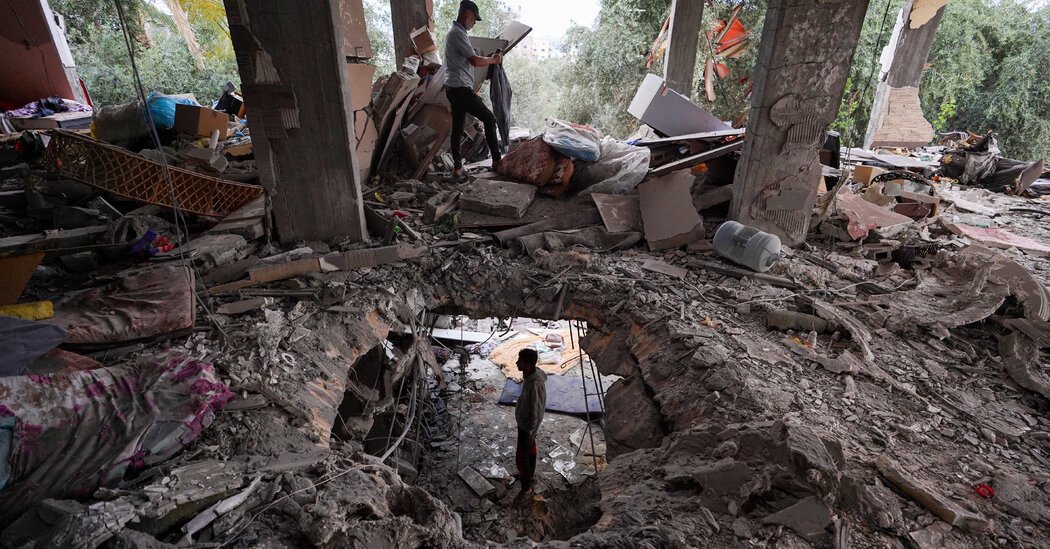A 73-year-old man from Britain died and dozens of people were injured after a plane encountered “sudden extreme turbulence” about 10 hours into a flight from London to Singapore, officials said on Tuesday.
The plane, a Boeing 777-300ER operated by Singapore Airlines, was diverted to Bangkok, the airline said in a statement, and landed at 3:45 p.m. local time on Tuesday.
In all, 71 people, including passengers and crew members, were injured, a hospital in Bangkok said. The hospital, Samitivej Srinakarin, said that of the 71 people from the flight who were being treated in its medical network, six were injured seriously. It listed four of the injured as being from Britain, with three from Malaysia, two from New Zealand and one each from Ireland, Spain and the United States. Other victims’ nationalities were not known.
The remaining passengers and crew were examined and treated at Suvarnabhumi Airport in Bangkok, the airline said. Singapore’s Ministry of Transport said it was examining the episode and would send investigators to Bangkok, and the National Transportation Safety Board in the United States said it would send a representative and four technical advisers to help. The Thai prime minister said his government would “assist with everything necessary for the injured.”

The man died aboard the flight, said Kittipong Kittikachorn, the director of Bangkok’s airport, without identifying him by name or giving a cause of death. The man’s wife was injured and taken to a hospital, Mr. Kittipong said.
The average flight time of that route is just under 13 hours. Mr. Kittipong said at a news conference that he went onto the airplane after it landed and described the scene as “a mess.”
The flight, SQ321, took off from Heathrow at 10:38 p.m. local time on Monday with 211 passengers and 18 crew members. The airline said it encountered turbulence over the Irrawaddy Basin over Myanmar, at 37,000 feet. Data on Flight Radar 24, a website that compiles public information about flights, appears to show that about 10 hours later, it went from 37,000 feet to an altitude of roughly 31,000 feet in only a few minutes.
The pilot declared a medical emergency and diverted the flight to Bangkok.
About 100 passengers who were not injured were to be flown to Singapore on Tuesday, Mr. Kittipong said. He described them as being in a state of shock.
It’s unclear what caused the episode. As the plane traveled across Myanmar, satellite data showed a strong storm beginning to form and bubble into the higher elevations, which suggests that the atmosphere in the region was becoming unstable. The plane was also moving toward other storms that were developing along the coast of Myanmar.
Deaths caused by turbulence are rare. The last time a passenger on a commercial flight operated by an American airline died from a turbulence-related injury was in 1997, when a United Airlines flight from Tokyo to Honolulu experienced severe turbulence over the Pacific Ocean, according to a N.T.S.B. investigation. The passenger was not wearing a seatbelt and flew up from her seat, possibly striking her head on the luggage bin, according to the investigation.
Recent research indicates that turbulence is rising and that climate change is a cause, specifically elevated carbon dioxide emissions that affect air currents.
José Alvarado, a pilot with the Icelandic airline Play, said that in his experience, clear-air turbulence, which happens most frequently at high altitudes, can occur without warning. For that reason, he tells passengers, “Even if there’s no turbulence, keep your seatbelts on.”
Once, more than two decades ago, when he was working as a flight attendant, he experienced turbulence on a flight from Madrid to Buenos Aires that was so severe that he was thrown upward when the plane suddenly dropped about 4,000 feet. His back and shoulder blades hit the ceiling of the cabin before he was thrown back down.
“I was just bouncing up and down,” he said, adding that some passengers also were injured. He said he had not experienced anything like that since.
Chee Hong Tat, Singapore’s minister for transport, said in a statement that he was “deeply saddened to learn about the incident.”
Singapore Airlines offered its condolences to the family of the person who died on the flight, adding that “we deeply apologize for the traumatic experience that our passengers and crew members suffered on this flight.”
Judson Jones, Jenny Gross and Christine Chung contributed reporting.










